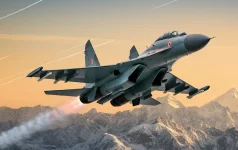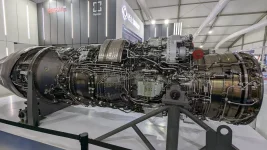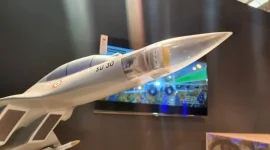- Views: 4K
- Replies: 21
The Indian Air Force (IAF) is poised to significantly enhance its combat capabilities with the planned upgrade of 84 SU-30MKI fighter jets under the "Super Sukhoi" program. The Ministry of Defence is nearing the finalization of this ambitious project, which aims to transform the SU-30MKI into a near fifth-generation platform.
The Defense Acquisition Council (DAC) granted approval for the upgrade on November 30, 2023, with an estimated budget of ₹63,000 crore. The proposal is now awaiting final clearance from the Cabinet Committee on Security (CCS), headed by the Prime Minister.
Once approved, the project is expected to take approximately seven years for complete development and flight testing, with the first upgraded aircraft anticipated to be ready by 2028. The entire upgrade cycle for all 84 aircraft is estimated to span around 15 years.
The "Super Sukhoi" upgrade will encompass a wide range of enhancements, including:
Advanced Avionics and Cockpit: A modernized cockpit with new avionics and multifunction displays will improve pilot situational awareness and reduce workload. Helmet-mounted displays will further enhance combat effectiveness.
Cutting-Edge Radar System: The integration of an Virupaksha Active Electronically Scanned Array (AESA) radar will significantly boost the aircraft's detection range, accuracy, and electronic warfare capabilities.
Enhanced Electronic Warfare Suite: A state-of-the-art electronic warfare suite will provide the upgraded aircraft with improved jamming and countermeasure capabilities, crucial for operating in contested airspace.
Upgraded Engines: While the AL-31F engines will be retained, they are expected to undergo minor upgrades by Hindustan Aeronautics Limited (HAL) to improve thrust and fuel efficiency.
Network-Centric Capabilities: Integration of advanced network-centric warfare systems will enable the SU-30MKI to seamlessly share data with other aircraft, ground stations, and naval assets, enhancing the IAF's overall situational awareness.
Expanded Weapon Systems: The "Super Sukhoi" will be compatible with a wider range of advanced weapons, including air-to-air missiles, precision-guided munitions, and potentially even hypersonic missiles.
Reduced Radar Cross-Section: While not a full-fledged stealth aircraft, the upgraded SU-30MKI will incorporate radar-absorbing materials (RAM) and possibly structural modifications to reduce its radar signature.
This comprehensive upgrade will significantly enhance the SU-30MKI's capabilities, making it a more formidable and versatile multi-role platform. The upgraded aircraft will play a crucial role in the IAF's combat fleet, complementing other advanced platforms like the Rafale and future indigenous stealth fighters.
The "Super Sukhoi" project underscores India's commitment to modernizing its defense capabilities. The collaboration with Russia on this project continues a long-standing partnership in the defense sector. Additionally, HAL's involvement in the upgrade process aligns with the "Make in India" initiative, boosting domestic defense manufacturing.



